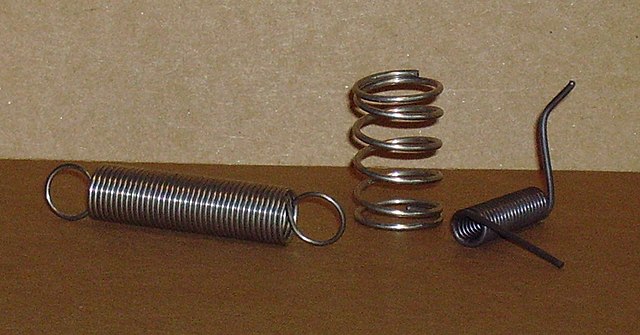In the fields of geometry and biochemistry, a triple helix is a set of three congruent geometrical helices with the same axis, differing by a translation along the axis. This means that each of the helices keeps the same distance from the central axis. As with a single helix, a triple helix may be characterized by its pitch, diameter, and handedness. Examples of triple helices include triplex DNA, triplex RNA, the collagen helix, and collagen-like proteins.
The collagen triple helix is a triple helix formed from three separate protein helices, spiraling around the same axis.
A helix is a shape like the cylindrical part of a coil spring or machine screw. It is a type of smooth space curve with tangent lines at a constant angle to a fixed axis. Helices are important in biology, as the DNA molecule is formed as two intertwined helices, and many proteins have helical substructures, known as alpha helices. The word helix comes from the Greek word ἕλιξ, "twisted, curved".
A "filled-in" helix – for example, a "spiral" (helical) ramp – is a surface called a helicoid.
(l-r) Tension, compression and torsion coil springs
A machine screw in macro view
Crystal structure of a folded molecular helix reported by Lehn et al.
A natural left-handed helix, made by a climber plant





